Announcing a new forum for bold ideas to build momentum
Proposals to eliminate the Department of Education (ED) have been a Republican talking point since Ronald Reagan first suggested it in the early 1980s. The Trump administration’s executive order to weaken the agency is just the latest attempt.
While the stated goal is to cut waste, reduce inefficiencies, and refocus education on students, there’s a reason ED has never been eliminated. It operates with the smallest staff of any cabinet-level department and accounts for less than 2% of federal spending. More importantly, it administers essential programs like Title I, which provides funding for schools serving low-income students, and IDEA, which supports students with disabilities.
Even if ED does get shut down, that won’t fix education’s inefficiencies, most of which are wired into the system by state regulations, labor contracts, and local customs. At the same time, defending the status quo is no solution. Democrats and their allies in state and local government have too long focused more on preserving a failing system than embracing necessary reforms.
In reality, the U.S. education system is long overdue for radical change. The latest National Assessment of Educational Progress (NAEP) results paint a bleak picture—less than a third of students nationwide are proficient in reading and math. Learning losses from school closures persist, but the decline began long before that. Over the past decade, student performance has steadily worsened, with the lowest-performing students falling the fastest. During the Covid-19 pandemic and resulting school closures, stagnation gave way to outright freefall in many states and cities, despite massive federal investments meant to reverse learning losses. The built-in rigidities, uneven access to effective instruction, and high expectations revealed themselves shockingly.
It’s past time to get to the heart of the problems that have plagued public education for decades under both parties’ watch. A plan for real reform is essential—one that rejects both the simplistic “burn it down” approach and the complacency of “deny and defend.” Real solutions require boldly rethinking how to educate students, remove bureaucratic barriers, and drive meaningful innovation.
The real issues: Unfair access, inefficiency, and systemic failures
My research center, CRPE, is fiercely nonpartisan and takes no organizational position on the incoming administration. We are, however, pro-change. For over 30 years, we have documented how inequality and low productivity are hardwired into public education. We have written reams of papers on the absurdities inherent to how the U.S. delivers public education.
We have documented the “blank stare of bureaucracy” and demonstrated how well-intentioned people and policies have created schools and school systems where affluent children do well, but disadvantaged children fall further behind the longer they are in school. We have studied how expansive, fast-growing special education programs are failing students in these programs while also masking a broader failure to meet students’ individual needs. We have documented the increasing demand for school choice and written about labor unions and advantaged parents shutting down public school choice programs, even when the choice programs in question are high-quality and within their local districts.
For nearly five years, we have reported on the disastrous impact of prolonged school closures on young people and the failures of an overly rigid, politicized, outdated public education system. Early in the pandemic, we warned that online learning, if not rolled out with the most vulnerable students in mind, would negatively impact them the most. We called for strategic and innovative staffing and resource deployment, including community and school teams and individual learning plans for every child, to address the extraordinary variation and intensity of need. We revealed the widespread demand among families, students, and educators for more joyful, equitable, personalized, and relevant schools to emerge out of the ashes of the pandemic. We followed families and teachers who created small-group learning pods to keep kids safe from infection and provide individualized help.
But we also documented how public school districts faltered when it came to keeping kids engaged while schools were closed and, once schools reopened, to restoring dire learning losses. Districts walked away from learning pods and other innovations. Reality drowned out aspirations for personalization, just-in-time interventions, and accelerated grade-level learning, as neither students nor teachers consistently attended school. Schools, like other institutions, suffered from broken norms and loss of political support. Five years later, many big-city districts struggle to deliver regular classroom instruction and keep labor peace. At the same time, enrollment declines and the end of federal ESSR support undermine their finances and destabilize their leadership. In short: the system isn’t working.
There is no question that public education needs to change. The real question is: what kind of change should it be? Doing away with the Department of Education taps into the vein of discontent but doesn’t fix any of the issues mentioned above—nor does sending more funds directly to states and districts with no strings attached.
Similarly, federal programs to expand private school choice programs will embolden and excite supporters of choice; however, decades of evidence show that simply telling families they can choose schools does not address the dysfunctions built into our education system. Private and charter schools are too small to serve all students who need options; crudely designed and poorly funded voucher programs are insufficient to generate a new supply of quality schools. Choice is a positive factor, but it is not magic. In fact, without attention to essential enablers like parent information, transportation, fair admissions, funding levels, new school creation, capacity-building, and performance measurement, choice can further exacerbate existing challenges.
So then, what could work, given that the feds have very little leverage over states and districts where 90% of education dollars are spent and that both parties’ deference and devolution to state and local control over education began long ago? Since the early 2000s, both Democrat and Republican administrations have eased up on assessment and accountability requirements for states, even after more than a decade of declining achievement and unprecedented learning loss during and post-Covid.
The solution: Building momentum around bold ideas
Chartering a path forward amid intense political division is daunting. However, our country cannot afford to ignore the dire state of public education nor continue punting the problem to the next administration or generation. American students will not benefit from denial, but they also won’t magically learn more or better as a result of haphazard institutional dismantlement.
We at CRPE believe the answer is a recognition that bold, even radical, change is needed. We were founded on the idea that public education is a goal, not a particular set of institutions. We also believe that the current public education delivery model, including existing institutions and policies, is too constraining and hidebound to allow students and educators to thrive. We believe most people recognize that change is needed. It’s simply a question of what kind of change.
To that end, CRPE is launching a forum to discuss and debate bold ideas that people might agree on. We will present a range of thought pieces, invited commentaries, and new proposals to provoke thought and inspire discussion and—hopefully—action.
We will tackle broad proposals and also seek ideas that could transform some of the especially pernicious challenges in public education. Here are some topics we’ll tackle; we hope to uncover more such ideas in the coming months.
- A national campaign for universal literacy by fourth grade and math competency by eighth grade
- Fixing IDEA: Achieving wildly better outcomes and realizing more efficiencies in special education
- Remaking ed schools from the ground up: Shaking up the current teacher training monopoly
- Using emerging technologies for “precision learning”
- A new accountability agenda: Commit to sensible testing aimed at informing parents and educators
- Balancing academic rigor and mental health supports
- Fixing the pension mess that’s robbing classrooms
- Funding students, not institutions
- Making school choice programs accessible to all families
The American people want education to improve, and they know the current path is not getting us there. But they also know that the goal of public education–to prepare all students for the futures they deserve–cannot be achieved without a plan to ensure evidence-based instructional practices take hold, make education relevant to the future, and recognize the widely varied needs and preferences among students and families across the country. This series aims to identify how to achieve these realities. At the very least, we hope to create a space for productive, nuanced, and intelligent discussion, not division and bomb-throwing.
Dismantling the Department of Education or shifting focus to privatization alone will not solve the deep-seated inefficiencies and lack of responsiveness to student and family needs in our education system. Real reform requires a federal role that prioritizes accountability, strategic funding, relevant career preparation, and student-centered policies.
If policymakers want to create efficiencies and better outcomes in K-12 public education, they should start by enacting genuine change rather than engaging in partisan talking points. Our goal with this series is to create a forum for bold change people can debate and possibly coalesce around.
It’s time for a new way forward—one that prioritizes students over politics and innovation over preservation.
Grounded in CRPE’s core belief that public education is a goal, not a particular set of institutions, this series begins with exploring what shape a revamped federal role in education might take. Future posts will examine the evolving responsibilities of states and local communities. This series is a forum to challenge assumptions, spark debate, and generate ideas for preparing today’s and tomorrow’s students for a rapidly changing, uncertain future.




